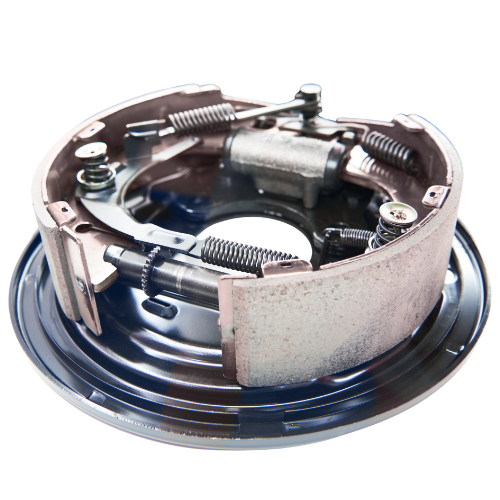Explore the four key components that make up a truck’s brake system—engineered to ensure safe, reliable, and powerful stopping performance on every road.

This article explores what a slack adjuster is, its purpose, types, maintenance, and the pivotal role it plays in vehicle safety.
A slack adjuster is a mechanical device found in vehicles equipped with air brake systems, such as trucks, buses, and trailers. Its primary function is to adjust the brake shoe clearance within the braking system to ensure consistent and effective braking performance.
The name “slack adjuster” originates from its role in taking up the “slack” or excess gap in the brake mechanism caused by wear and tear. Without this adjustment, brakes would lose efficiency over time, posing serious safety risks.
Slack adjusters come in two primary types:
These require periodic manual adjustment by mechanics or drivers. Though simple and cost-effective, manual slack adjusters demand regular inspections to ensure they function correctly.
Advantages:
Disadvantages:
Automatic slack adjusters are more advanced and automatically adjust the brake clearance as needed. They are now standard on most modern air-braked vehicles due to their reliability and convenience.
Advantages:
Disadvantages:
Slack adjusters are connected to the brake chamber push rod and the S-cam shaft. When the driver presses the brake pedal, compressed air enters the brake chamber, pushing the rod outward. This movement rotates the slack adjuster, which in turn moves the S-cam, forcing the brake shoes against the drum to create friction and stop the vehicle.
In the case of automatic slack adjusters, they monitor the stroke of the brake chamber and adjust themselves if the stroke exceeds a pre-determined limit. This ensures optimal braking without the need for manual adjustments.
Slack adjusters typically consist of the following parts:
A malfunctioning slack adjuster can compromise the vehicle’s braking system. Look for these signs:
Proper maintenance of slack adjusters is crucial for vehicle safety and efficiency. Regular inspections and adjustments ensure the braking system operates reliably.
Manual Slack Adjusters: Check and adjust clearance every 10,000 miles or as recommended by the manufacturer.
Automatic Slack Adjusters: Though less demanding, they should be inspected during regular maintenance to ensure the adjustment mechanism is functioning correctly.
Though automatic slack adjusters are low-maintenance, they can occasionally fail. Common issues include:
Governments worldwide impose strict regulations for slack adjusters in commercial vehicles to enhance road safety. In the United States, for example, the Department of Transportation (DOT) mandates regular inspections and maintenance of air brake systems, including slack adjusters.
Slack adjusters provide several advantages, including:
1. What happens if a slack adjuster fails?
A failed slack adjuster can lead to brake imbalances, reduced stopping power, or complete brake failure, posing significant safety risks.
2. How often should slack adjusters be checked?
Manual slack adjusters should be checked during regular maintenance, typically every 10,000 miles. Automatic slack adjusters should be inspected periodically as part of routine vehicle checks.
3. Can I replace a slack adjuster myself?
While technically possible, replacing a slack adjuster requires mechanical expertise and knowledge of air brake systems. It’s advisable to have the replacement done by a professional.
4. Are automatic slack adjusters mandatory?
In many regions, automatic slack adjusters are mandatory for new commercial vehicles to ensure compliance with safety standards.
5. How do I know if my slack adjuster is automatic or manual?
Automatic slack adjusters typically have a more complex design and may feature a label or part number indicating their type. Consult the vehicle’s manual or a mechanic for confirmation.
6. Why do slack adjusters wear out?
Slack adjusters wear out due to prolonged use, lack of lubrication, exposure to dirt and moisture, or improper maintenance.
Slack adjusters are indispensable for the safe and efficient operation of air brake systems in heavy vehicles. Whether manual or automatic, they ensure proper brake clearance, enhance safety, and reduce maintenance costs. Regular inspection and maintenance of slack adjusters are critical to preventing potential accidents and ensuring compliance with regulatory standards.
Investing time and effort into understanding and maintaining slack adjusters can lead to better performance and longer service life for your vehicle’s braking system.